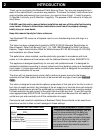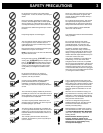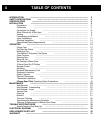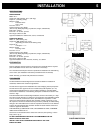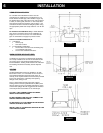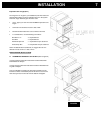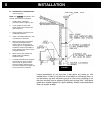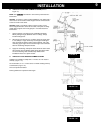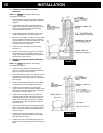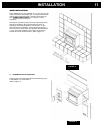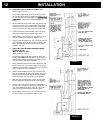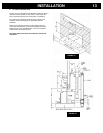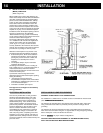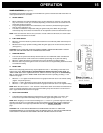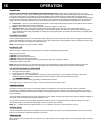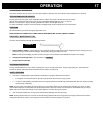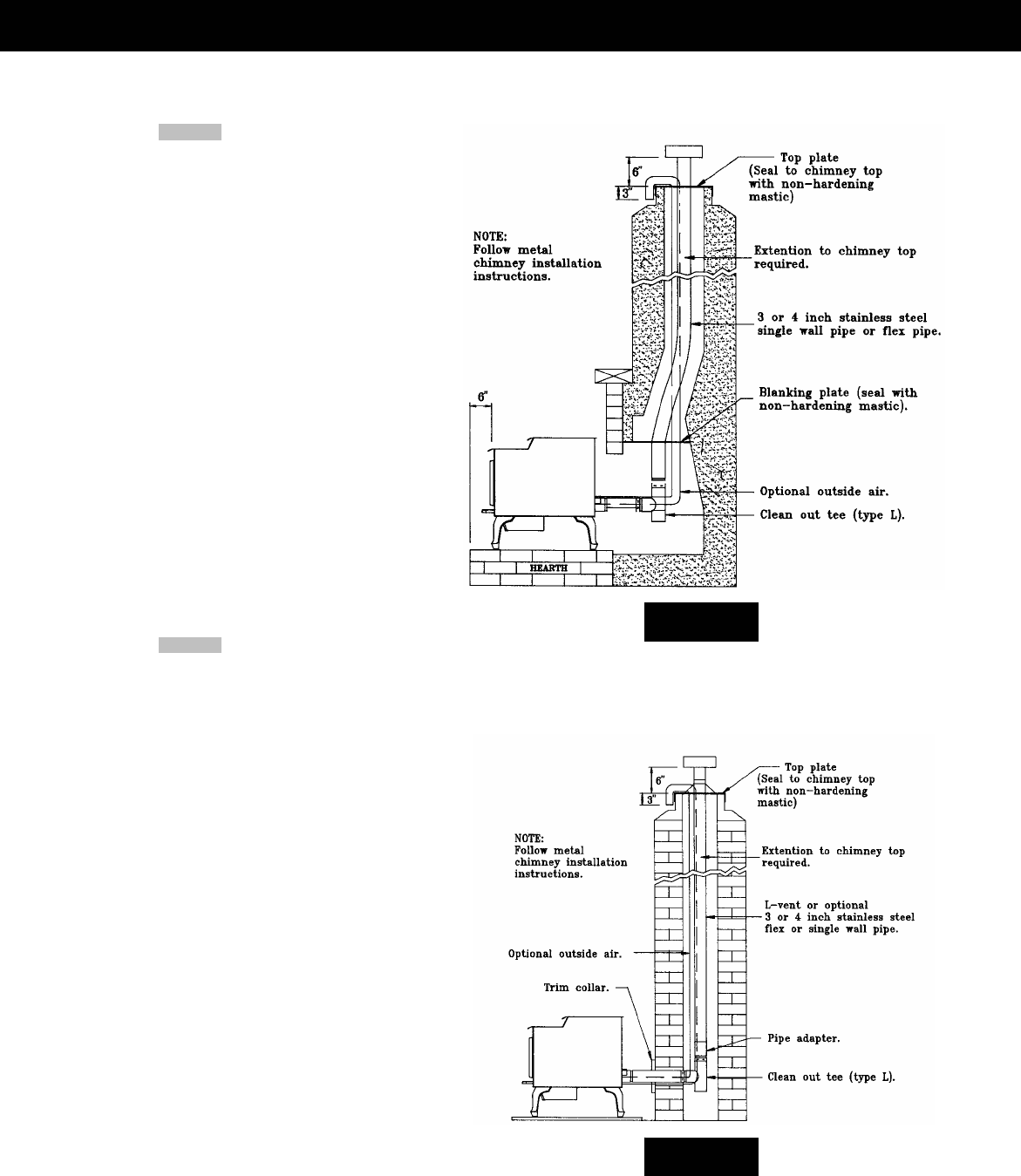
D. VERTICALLY INTO EXISTING MASONRY
FIREPLACE
NOTE: See “VENTING” and follow L-Vent chimney
manufacturer’s instructions.
1. Have the masonry chimney inspected by a qualified
chimney sweep or installer to determine its structural
condition.
2. You will need a pipe length equal to the chimney
height from the hearth. If outside combustion air is to
be used, you will need a pipe length equal to the
chimney height plus 18 inches.
3. Install a blanking plate and the chimney pipe, and if
used the outside air pipe, as shown in Figure 12.
4. Attach the L-Vent adapter, a section of pipe and clean
out tee, making sure the clean out tee is centered in
the chimney flue area. Use RTV, metallic tape, and a
minimum of three self-taping screws at all joint
connections to ensure a tight seal.
5. Position the stove, adhering to the clearances in
Figures 1 & 2.
6. Measure and build chimney top plate. Cut out holes
for chimney pipe, and if used the outside air pipe.
Install and seal with non-hardening mastic to prevent
water leakage. Install vent cap.
E. INSTALLATION THROUGH SIDE OF MASONRY
CHIMNEY
NOTE: See “VENTING” and follow L-Vent chimney
manufacturer’s instructions.
1. Position the stove, adhering to the clearances in
Figures 1 & 2. Mark the center of the hole where the
pipe is to pierce the masonry chimney.
2. It will be necessary to break out the masonry around
the location of the pipe center mark. Use a 4-inch
diameter hole for 3-inch pipe and 5-inch diameter hole
for 4-inch pipe.
3. Measure and build chimney top plate. Cut out holes
for chimney pipe, and if used the outside air pipe.
4. Install the tee on the bottom of the vertical pipe
system and lower it down the chimney until the center
branch of the tee is level with the center of the hole in
the masonry, as shown in Figure 13.
5. Install and seal the top plate from step 3 with non-
hardening mastic. Slip the storm collar over the pipe,
and while holding the pipe at the proper elevation,
affix the collar with a minimum of three ¼” stainless
steel sheet metal screws. Seal all joints and seams
around the collar.
6. Connect the horizontal pipe by pushing it through the
hole in the masonry and lining it up with the branch in
the tee. Push the pipe into the tee while twisting it to
lock it into the tee.
7. If desired, once the horizontal pipe is in place, the
space between the pipe and masonry may be filled
with high-temperature grout.
8. Install the trim collar. An adjustable pipe length and
adapter may be needed to finish the connection to the
stove.
FIGURE 12
FIGURE 13
IN
S
TALLATI
O
N1
0



